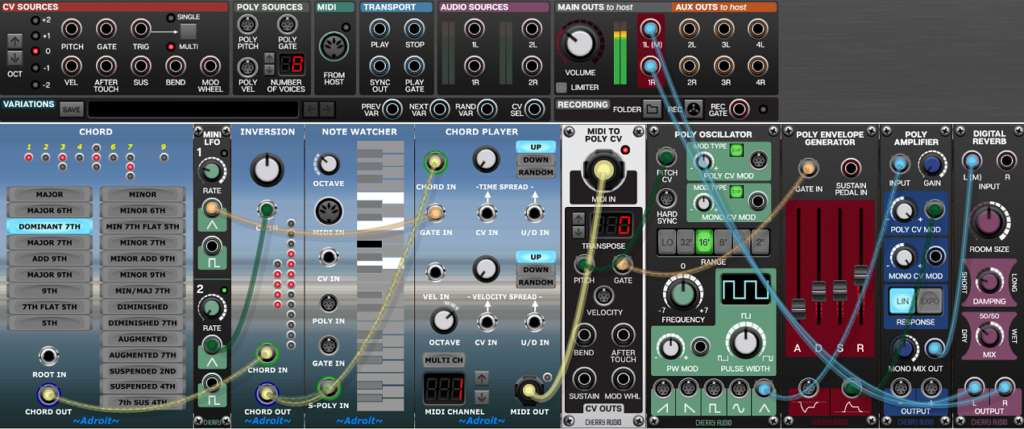The following patch is handy for training your ears to appreciate the subtle differences between various chord types.
Providing you have the Core version of Voltage Modular and LSSP XL installed you can download the following .voltagepreset file and click on it to automatically load Voltage Modular with the patch ready built.

The upper LFO in the Mini LFO module triggers a repeating chord stab from the Chord Player module.
The lower LFO in the Mini LFO modules sweeps the inversions up and down so that you can hear the same chord in different inversions. Unplug the cable and use the Inversion module’s knob to set inversions manually.
Once you have the patch going then explore the various chords listening to their effect and looking at which notes are being played on the Note Watcher module.
Also study the LEDs at the top of the Chord module. You will hopefully soon start seeing a pattern. Chord names can be confusing and seeing things broken down into their components by these LEDs can be quite educational.
Broadly speaking the left-hand column of the Chord module supplies major “happy” chords. Note the major thirds (as shown by the upper 3 LED).
In contrast the right-hand column mainly supplies minor “sad” chords. Note the minor thirds (as shown by the lower 3 LED).
However the suspended chords at the bottom of the right-hand column don’t conform to this major/minor third distinction as they don’t use thirds. This gives them a very useful quality that is neither major or minor.
Similarly the 5th chord at the bottom of the left-hand column does not have a third. It’s not really even a chord but is known as the “power chord” because of its special sound.
The eagle-eyed amongst you may notice that the Diminished 7th chord features a double flat 7th. This is the same pitch as the 6th but is still called a seventh. Don’t blame me, this kind of thing keeps music professors in gainful employment.